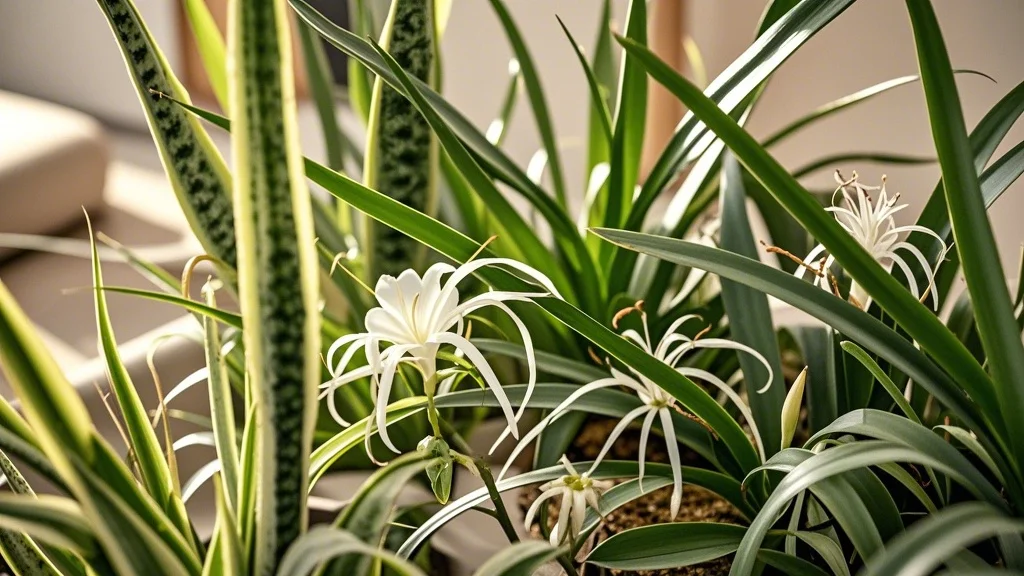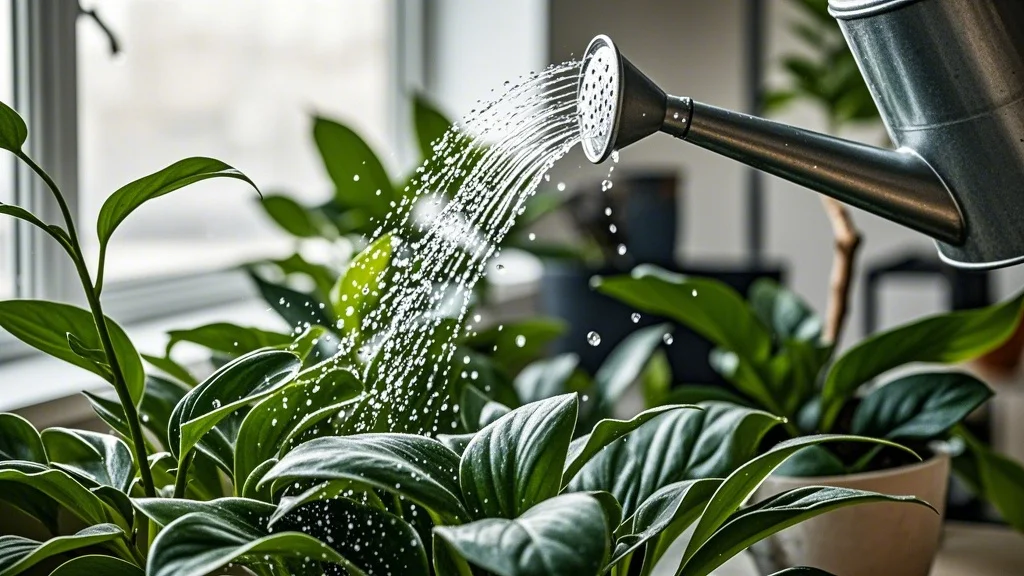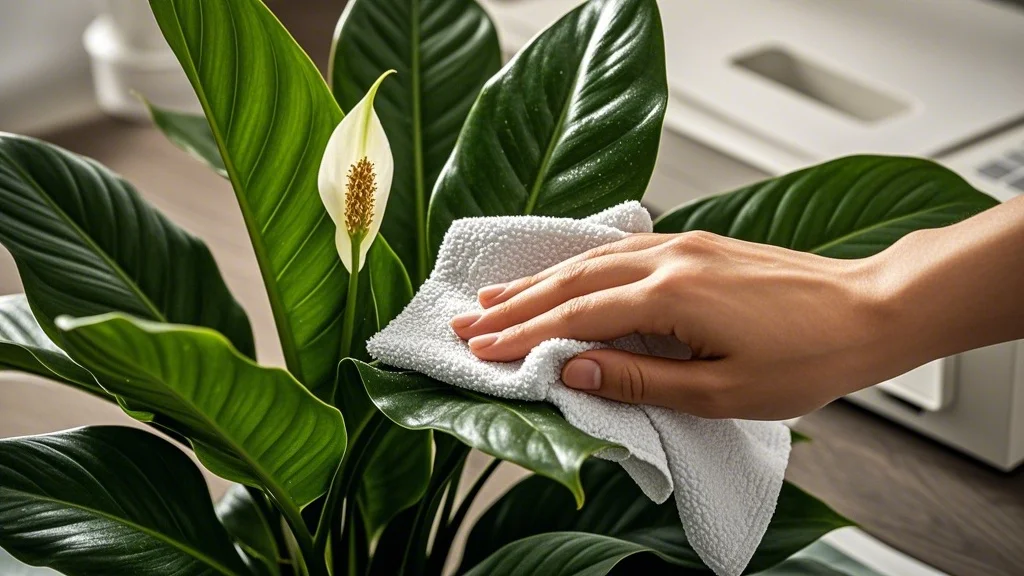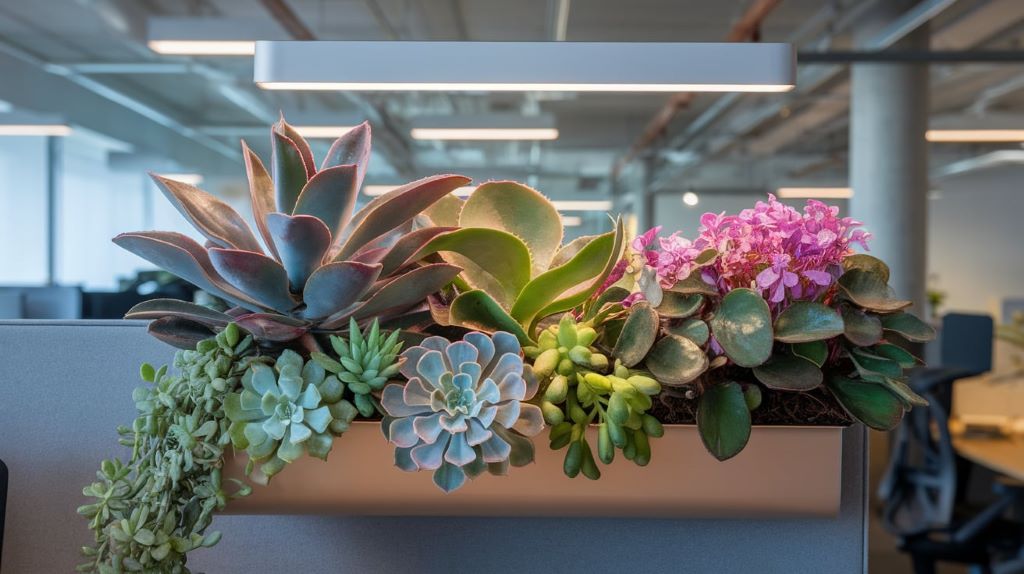In today’s urban environments, where air quality is often compromised, bringing nature indoors has become more than just an aesthetic choice. For health-conscious office workers and those concerned about air quality, introducing air-purifying plants to your workspace can be a game-changer. These compact green allies not only add a touch of nature to your desk but also work tirelessly to improve the air you breathe throughout your workday.
Contents
Why Desktop Plants Matter
Indoor air can be up to five times more polluted than outdoor air, according to the Environmental Protection Agency. Common office pollutants include volatile organic compounds (VOCs) from furniture, carpets, and electronic devices. Air-purifying plants can help remove these toxins, increase oxygen levels, and boost humidity, creating a healthier work environment.
Top Air-Purifying Desktop Plants

1. Snake Plant (Sansevieria)
Size: 6-12 inches
Care Level: Low
The snake plant is a champion air purifier, known for its ability to remove formaldehyde, xylene, and toluene from the air. Its upright, sword-like leaves make it perfect for small spaces.
Pros:
- Thrives in low light conditions
- Requires minimal watering
- Releases oxygen at night, improving sleep quality
Cons:
- Can be toxic if ingested by pets
2. Spider Plant (Chlorophytum comosum)
Size: 8-12 inches
Care Level: Low to Medium
Spider plants are excellent at removing formaldehyde and xylene. Their cascading leaves add a dynamic element to any desk setup.
Pros:
- Fast-growing and easy to propagate
- Adaptable to various light conditions
- Non-toxic to pets
Cons:
- May require occasional pruning to maintain size
3. Peace Lily (Spathiphyllum)
Size: 1-3 feet
Care Level: Medium
Peace lilies are powerful air purifiers, capable of removing benzene, formaldehyde, and trichloroethylene. Their elegant white flowers add a touch of sophistication to any workspace.
Pros:
- Thrives in low to medium light
- Indicates when it needs water by drooping
- Increases room humidity
Cons:
- Toxic to pets if ingested
- Requires regular watering
4. Bamboo Palm (Chamaedorea seifrizii)
Size: 2-4 feet (can be kept smaller with pruning)
Care Level: Medium
Bamboo palms are excellent at removing formaldehyde and act as natural humidifiers. Their feathery fronds bring a tropical feel to your desk.
Pros:
- Effective at removing benzene and trichloroethylene
- Tolerates low light conditions
- Pet-friendly
Cons:
- May outgrow desktop space if not pruned regularly
- Requires consistent moisture
5. Aloe Vera
Size: 6-12 inches
Care Level: Low
Beyond its well-known skincare benefits, aloe vera is an efficient air purifier, particularly effective against formaldehyde and benzene.
Pros:
- Requires minimal watering
- Thrives in bright, indirect light
- Has medicinal properties for minor cuts and burns
Cons:
- Can be harmful to pets if ingested
- Needs well-draining soil to prevent root rot
6. English Ivy (Hedera helix)
Size: Trailing vines, can be kept compact
Care Level: Medium
English ivy is particularly effective at removing airborne fecal particles and formaldehyde. Its trailing nature makes it perfect for hanging planters or desk edges.
Pros:
- Adaptable to various light conditions
- Effective against mold spores
- Adds a classic, elegant touch to any space
Cons:
- Toxic to pets and humans if ingested
- Requires regular misting for optimal health
7. Chinese Evergreen (Aglaonema)
Size: 1-3 feet
Care Level: Low
Chinese evergreens are known for their ability to remove benzene and formaldehyde. Their variegated leaves add visual interest to any desk setup.
Pros:
- Tolerates low light and neglect
- Comes in various leaf patterns and colors
- Improves indoor humidity
Cons:
- Toxic to pets if ingested
- Sensitive to cold drafts
Maximizing Air Purification
To get the most out of your desktop plants:
-
Proper Placement: Position plants within your breathing zone, ideally within 6-8 feet of where you sit.
-
Adequate Light: While many air-purifying plants tolerate low light, providing them with appropriate light will enhance their air-cleaning abilities.
-
Regular Cleaning: Dust leaves gently with a damp cloth to keep their pores open for maximum air filtration.
-
Proper Watering: Overwatering can lead to mold growth, which defeats the purpose of air purification. Follow specific watering guidelines for each plant.
-
Rotation: Rotate your plants periodically to ensure even growth and maximize their exposure to air pollutants.
Caring for Your Desktop Air Purifiers

Watering
Most desktop plants prefer their soil to dry out slightly between waterings. Use your finger to check soil moisture – if the top inch feels dry, it’s time to water.
Light
While many air-purifying plants tolerate low light, most prefer bright, indirect light. If your workspace lacks natural light, consider supplementing with a small grow light.
Humidity
Office environments can be dry. Increase humidity by grouping plants together, using a small desktop humidifier, or placing plants on pebble trays filled with water.
Fertilizing
Feed your plants with a balanced, water-soluble fertilizer once a month during the growing season (spring and summer).
Repotting
Most desktop plants will need repotting every 12-18 months. Choose a pot that’s 1-2 inches larger in diameter than the current one, with good drainage holes.
The Impact on Workspace Wellness
Incorporating air-purifying plants into your workspace goes beyond just cleaning the air. Studies have shown that the presence of plants in work environments can:
- Reduce stress and anxiety
- Increase productivity and creativity
- Improve mood and job satisfaction
- Enhance cognitive function and concentration
- Reduce sick days by improving overall health
Combining Plants for Maximum Effect
While each plant has its strengths in air purification, combining different species can create a more comprehensive air-cleaning system. Consider creating a mini garden with 2-3 different plants to target a wider range of pollutants.
For example:
- Snake Plant + Spider Plant: Excellent for formaldehyde removal and increasing oxygen levels
- Peace Lily + Bamboo Palm: Great for removing multiple VOCs and increasing humidity
- Aloe Vera + English Ivy: Effective against formaldehyde, benzene, and airborne particles
Conclusion
Introducing air-purifying desktop plants to your workspace is a simple yet effective way to improve air quality and overall well-being. These green companions not only filter harmful toxins but also bring a touch of nature to your daily work environment. By choosing the right plants and providing proper care, you can create a healthier, more productive workspace that benefits both your physical health and mental well-being.
Remember, while plants are excellent natural air purifiers, they work best in conjunction with good ventilation and regular cleaning practices. Embrace the power of nature in your workspace, and breathe easier knowing your desktop plants are working hard to keep your air clean and fresh.








